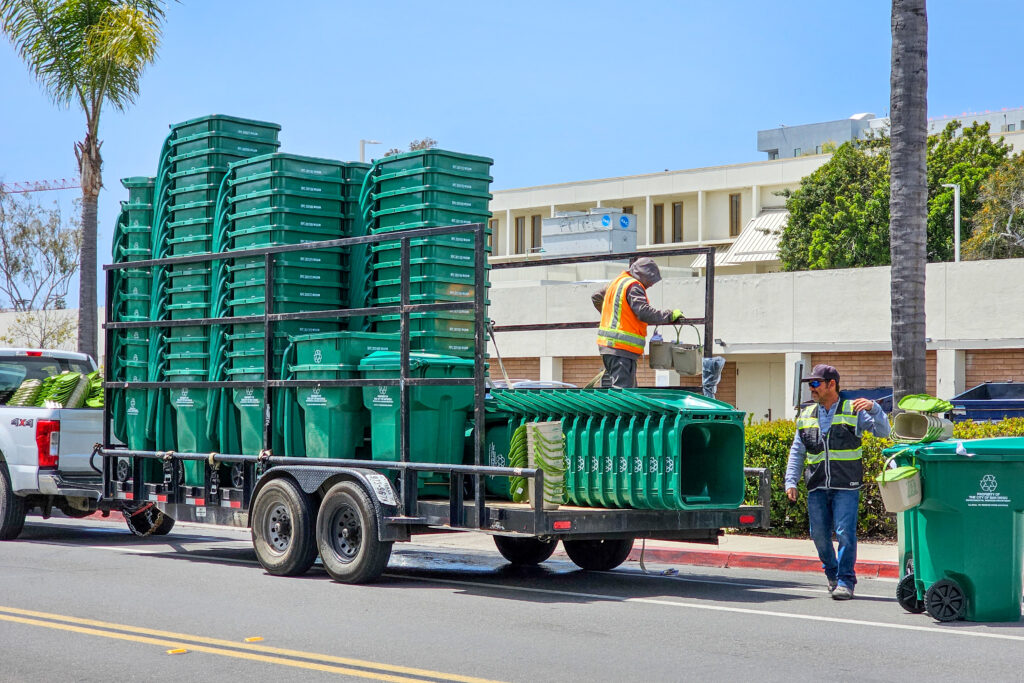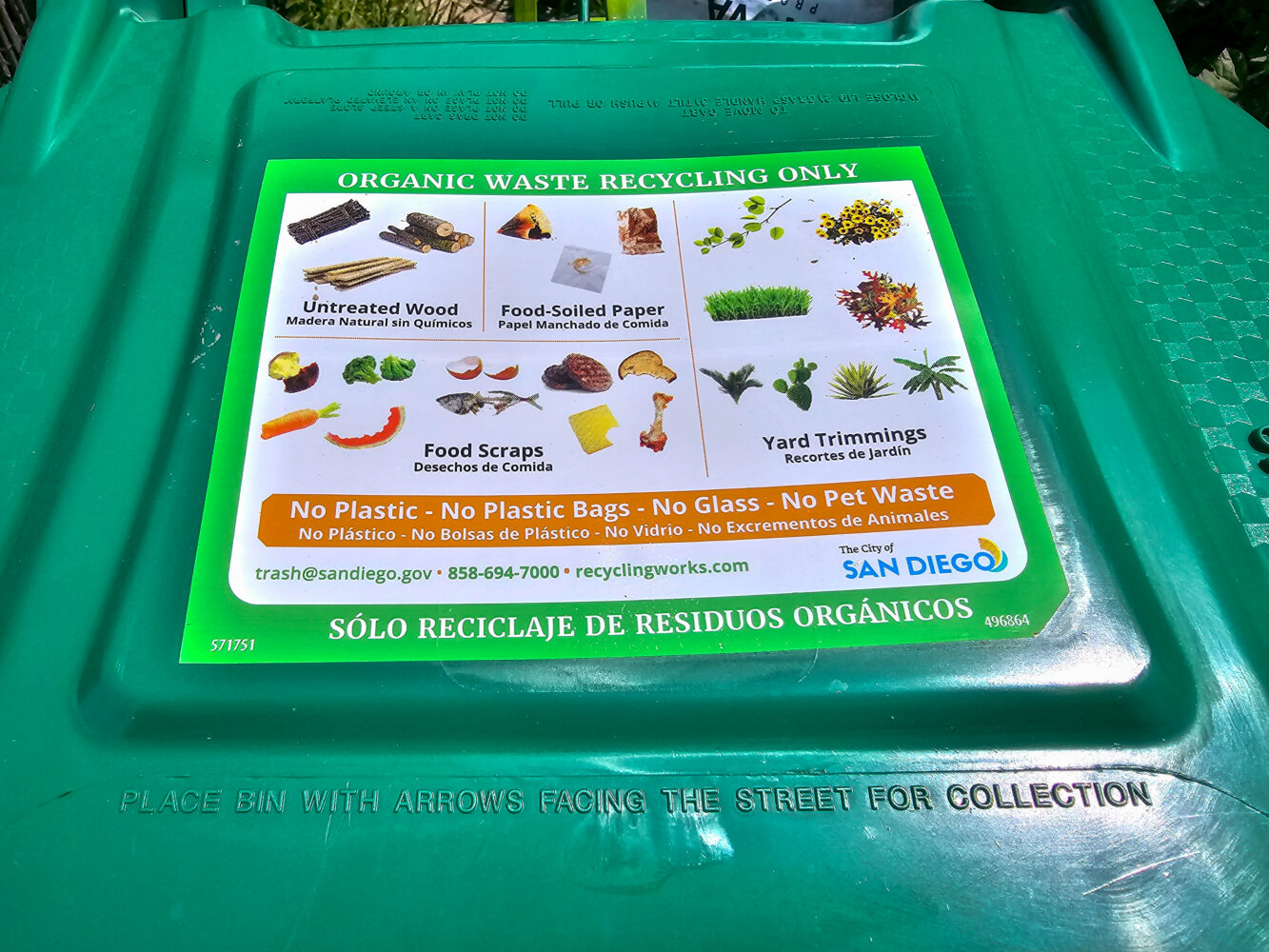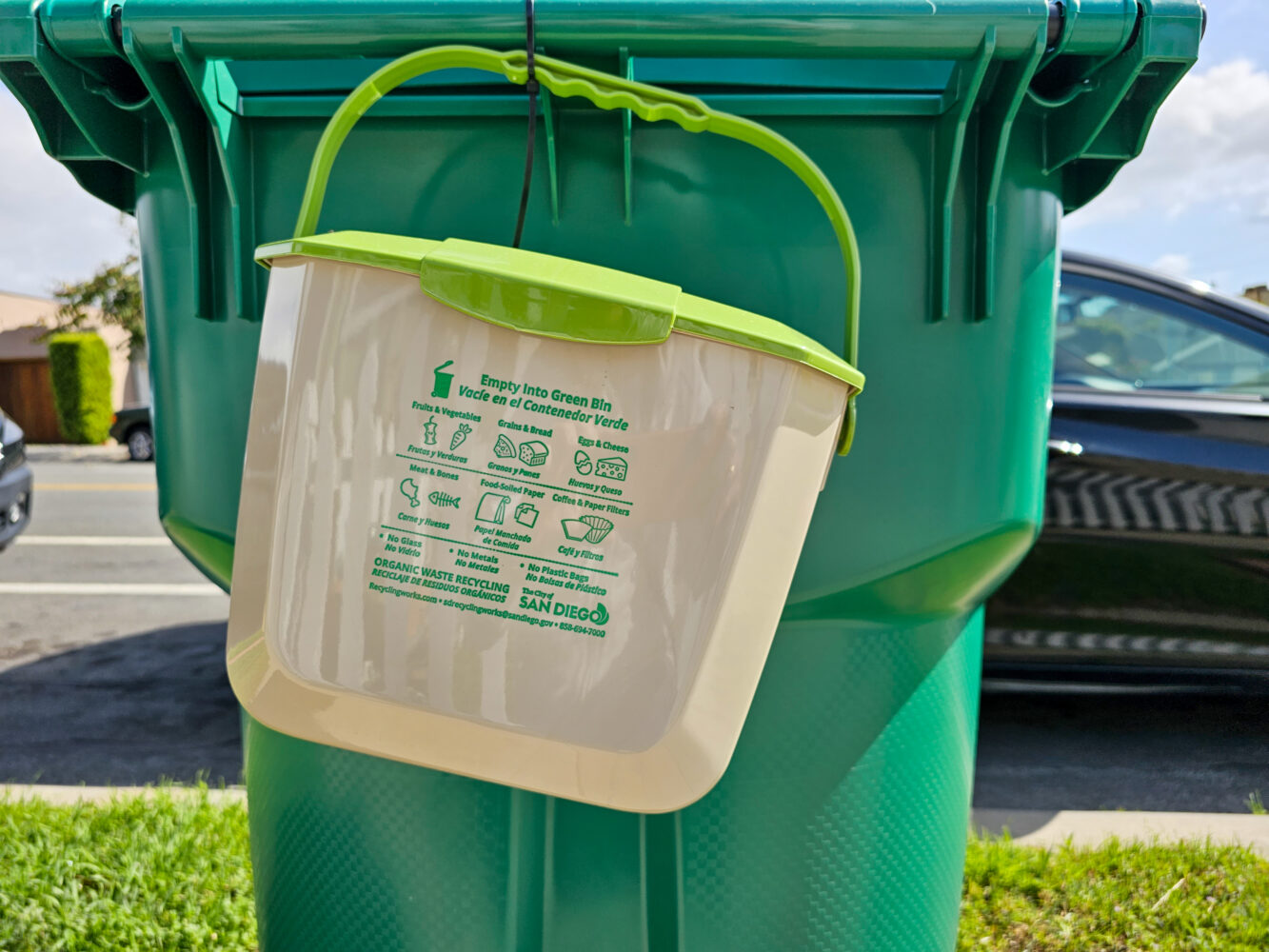The Featured Image and companions document the beginnings of a disaster. For weeks, San Diego contractors have been dropping compost containers outside residences. These are in addition to recycle and trash bins already in use by apartments, condominiums, and homes across the area. Their deployment is the worst kind of stupid public policy, which is designed to protect the environment and diminish the so-called effects of climate change. Humans aren’t important enough to matter in the public policy equation.
Shortlist of grief: Animals knocking over bins and spilling rotting food into the alleys and streets. Hungry homeless people digging into the containers, also spilling rotting food, becoming sick from eating it, and likely spreading one or more of any number of bacterial infections. Disease is the clincher. These compost bins surely will be breeding grounds that could, and likely will, lead to E. Coli and Salmonella outbreaks—to name but two. One is reason enough to worry.
What about house flies? Surely rotting food placed in bins outdoors will attract more, and with breeding increase their numbers. Stench? How about cleaning containers? Water runoff into the street gutters goes into the ocean (read the warning notices around them). Compost bins will need to be hosed out. Often.
My concern isn’t composting, as a routine. People choosing the practice, and doing it responsibly, fall into a very different category than those being compelled to do so and without safe means of storing the waste—such as a designated area in a back yard. Oh the irony there. San Diego’s loose housing development regulations let pretty much anyone that has additional property space to erect so-called Accessory Dwelling Units (ADUs). Backyards are an endangered species, so to speak. Of course, most people living in multi-unit residences don’t have yard space to compost, regardless. Meaning: Fewer citizens have option to responsibly compost, but that’s no reason to let loose the bureaucratic beast and its policy mauling paws and claws.
Garbage is typically bagged before being binned, which offers some protection against pests (whether animal or human) and disease. But plastic is forbidden in compost containers. Residents are supposed to use city-supplied buckets (see photo three) to carry foodstuff waste to the bins. That’s the problem, and these things will soon be in use across San Diego. Animals. Homeless. Disease.
I suppose when local government officials complain about the shortage of affordable housing and seek remedy, sickness and death is an alternative to building more ADUs, apartments, or condominiums.
Let’s talk photos, all of which were taken today using Samsung Galaxy S23 Ultra. The first shows the bins on a truck, from which workers remove and place the containers in front of residential properties. Vitals: f/2.4, ISO 50, 1/2500 sec, 70mm (film equivalent); 12:18 p.m. PDT. The second shows the rules for filling the bin. Vitals: f/2.2, ISO 50, 1/7100 sec, 13mm (film equivalent); 12:21 p.m.. The last is the compost refuse bucket. Vitals: f/1.7, ISO 10, 1/530 sec, 23mm (film equivalent).
Okay, so do you agree?


